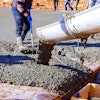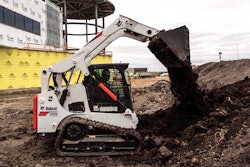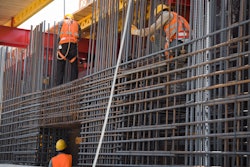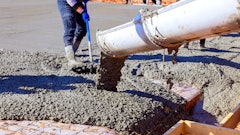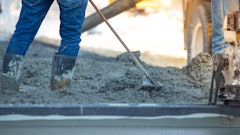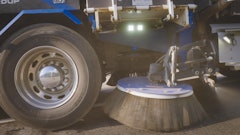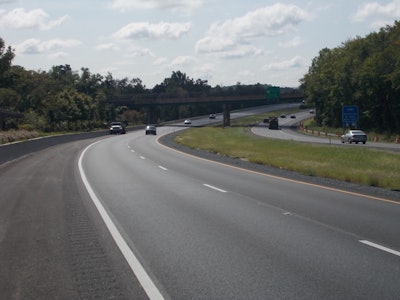
At the recent National Asphalt Pavement Association’s First International Conference on Stone Matrix Asphalt, sustainability proved to be the predominant benefit and talking point of presentations and discussions held during the event. While durability, performance and rideability have been and continue to be primary benefits of choosing an SMA solution, sustainability has proved and will continue to prove to be an even greater benefit for road agencies looking to maximize the service life of roads in an economically-, environmentally- and socially-responsible manner.
Dr. William R. Vavrik, P.E., vice president and principal engineer for Applied Research Associates, Inc., presented a Life-Cycle Cost Analysis (LCA) to evaluate the sustainability of SMA mixtures and how the Illinois Tollway implemented a sustainable approach in 2006 to build and maintain the road network and save over $200 million over a 10-year period in the process.
As the tollway executive director stated in 2011: “As good environmental stewards, the tollway’s capital program promises to be the cleanest and greenest program in tollway history.” 2014 statistics validate that objective with 659,000 tons of recycled asphalt, 540,000 tons of recycled concrete and 24,000 tons of recycle asphalt shingles used to construct new tollway projects.
By using LCA, all aspects of the tollway program can be measured and improved results, both in network enhancement and cost-savings to achieve those improvements, can be reported to customers – motorists who are paying to drive on the tollways.
CRADLE TO GRAVE
The LCA approach is a cradle to grave interaction of the environment and production system. By constructing long-lasting SMA roads using recycled materials, the self-funded Illinois Tollway can maintain quality roads while limiting toll increases over the life span of the network. The LCA framework considers the cost of acquiring materials, constructing the roads, using the roads, maintaining the roads, and the end-of-life replacement cost of the structure.
As Vavrik noted, the Illinois Tollway has 12-years of sustainable SMA experience to draw from as it evaluates the LCA program approach in determining how to move forward in maintaining a cost-effective road network that best services the needs of customers. Smoothness, rolling resistance (fuel economy) and extended life (roads that are not clogged with constant construction) are all important to the motorists who pay to use those roads.
The dynamic 294-mile Illinois Tollway transportation network carries 1.6 million vehicles per day, with 88 percent of them paying electronically. With no state or federal funding, building better, smoother roads that last longer has been a primary impetus to the introduction of SMA to the tollway’s toolbox in 2008. Several hundreds of thousand tons of friction surface SMA has been placed since then.
As Vavrik notes, Pavement Management Data proves SMA mixes last longer than conventional dense graded mixes. The Condition Rating Survey, developed by the Illinois DOT and used by the Illinois Tollway, validates the service life of SMA roads with data collected on surface distress, roughness (International Roughness Index), rutting and faulting. With a grading system of 9 for excellent and 1 for poor/failure, the tollway maintains its roads above a 6.5 rating. The CRS evaluates pavement type, surface thickness and Estimated Single-Axle Load (ESAL).
“As a toll road system, we must maintain a higher standard to satisfy our paying customer,” Vavrik says. “When we started using polymer modified asphalts in the late ’90s, we extended pavement life by three million EASLs, approximately three years. Now SMA has extended the pavement life even further.”
SMA extends the use phase of a roadway and has a positive influence on the environmental impact construction causes. Whenever you can reduce the frequency you have to source virgin materials based on how often you must construct the road and the reduction of materials you need because you’re recycling aggregates and binder, both have a positive impact on the environment. Recycling materials and reducing the construction activity required to construct and maintain a roadway also has a positive impact on reducing the impact of global warming.
WHY SMA MAKES SO MUCH SENSE
Randy West, director for the National Center for Asphalt Technology (NCAT), says the ongoing evaluation of SMA mix designs and placements at the testing track outside of Auburn, MS continue to deliver improved performance data. While the average cost of an SMA pavement is approximately $19 more per ton than a polymer modified Superpave mix, test pavements have proved SMA to deliver better overall performance and longer service life than traditional pavements. And, with the ability to add recycled materials like RAP and recycled asphalt shingles (RAS), those longer lasting SMA mix designs can be and economical solution to maintaining road structures. Six states currently allow up to 15 percent RAP in SMA mix designs, and current SMA warm mix asphalt (WMA) designs produced allow up to 13 percent RAP and 5 percent RSA. Some contractors are also experimenting with DOTs on the use of crumb tire rubber (CTR) added to SMA mixes to eliminate fiber content while fortifying the binder. The CRT mix has eliminated or minimized the reflective cracking common when overlaying Portland cement concrete roads.
Randy West, another NCAT associate, adds that the test facility has not had an SMA failure after 60 million EASLs. With 32 SMA mix designs placed, starting with eight in 2000, eight in 2003, three in 2006, two in 2009, seven in 2012 (including WMA, RAP, RAS, GTR), three in 2015 and one in 2018, NCAT has gathered a considerable amount of performance data that further supports the use of SMA.
On major thoroughfares in urban applications, SMA has provided promising results as a quiet pavement option. When comparing the cost of noise abatement walls with the cost of an SMA pavement, the SMA proved to be a much more economical solution in reducing highway noise in the adjacent residential neighborhoods that border the high-traffic arterials.
The bottom line for many applications is that SMA delivers more than extended service. SMA provides positive socioeconomic benefits: improved fuel efficiency, noise reduction, and an improvement everyone’s overall health.




